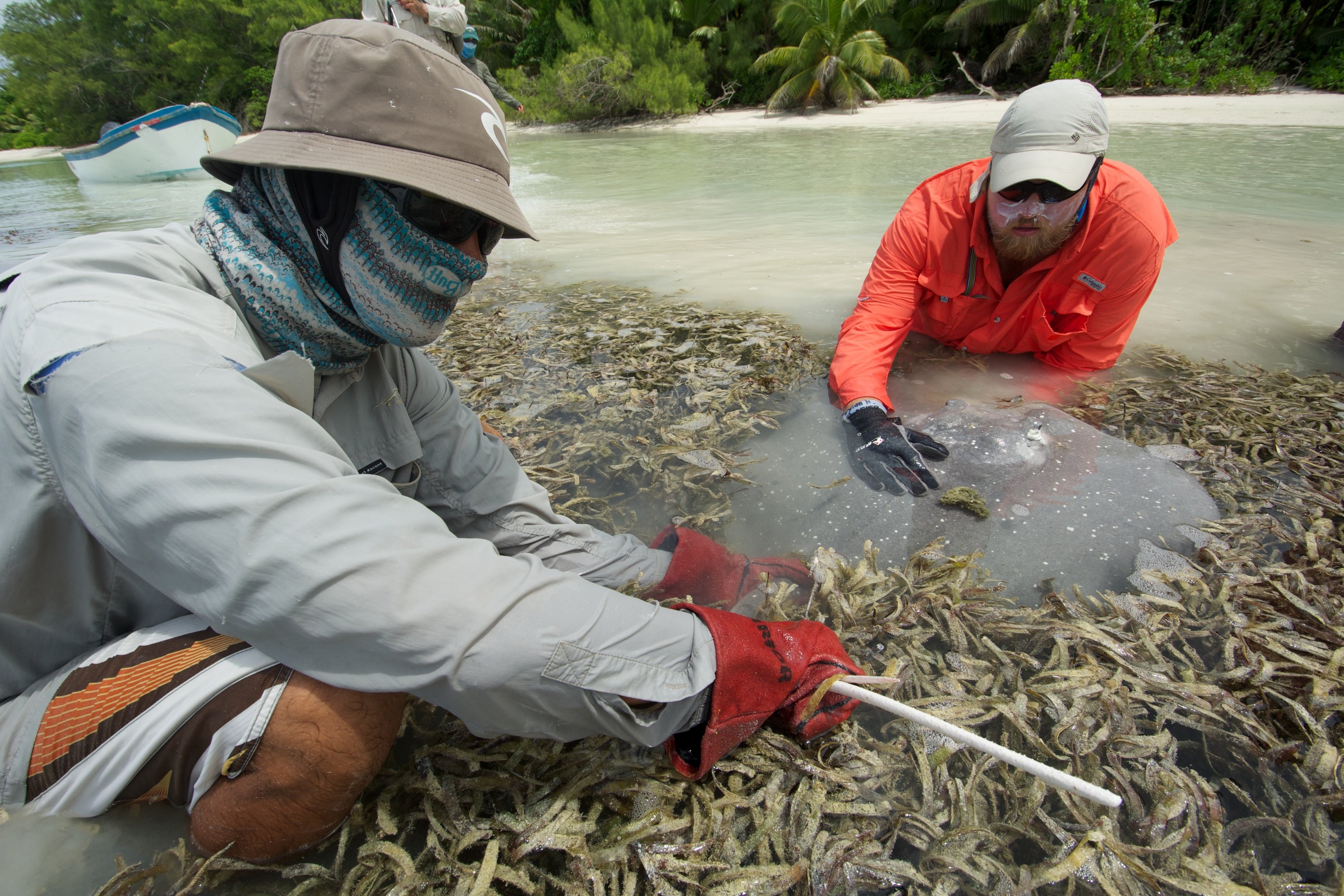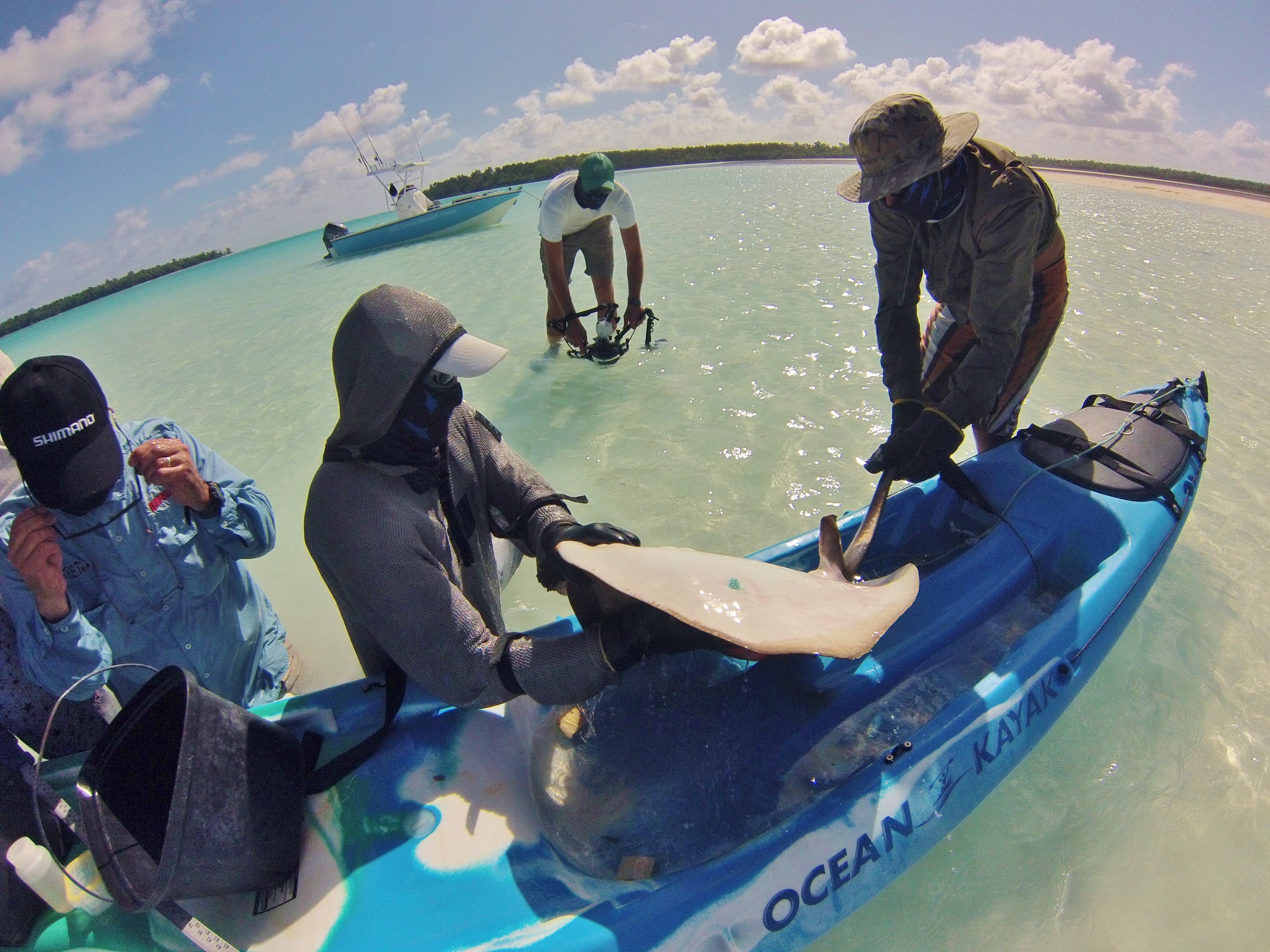My knight in shining armour
Working with stingrays can be a risky business, especially if you want to catch them alive, perform surgery and then release them. This is exactly what we are trying to accomplish on my third field trip to St Joseph Atoll, Seychelles.
Last year, we surgically implanted 30 acoustic transmitters into stingrays of two species. These transmitters enable us to monitor the movements of these animals (see my past blog [hyperlink] for more details). This trip we want to accomplish the same thing, but this time we are including a third stingray species, the feathertail ray. At the end of this trip we will have tagged 20 individuals of each species, which will enable us to see how all three species move and interact with one another.

Chris using welding gloves to hold the stingray’s spine against its tail. © Photo by Rainer von Brandis| Save Our Seas Foundation
The dangerous part of a stingray is the barbed spine located about halfway down its tail. Last year we simply used welding gloves to hold this spine flat against its tail while performing surgery so that nobody could get hurt. However, there was no protection for the person handling the front of the ray. Enter the chainmail jacket!
These stingrays are actually known as whiptail stingrays – and for good reason. They can whip their tail 360 degrees and will generally bring them over their heads. In addition, the biggest danger posed by a stingray is if it stings you near a vital organ (such as your heart or intestine). This means that you are in the most danger when standing in front of the ray, because if the tail comes for you, it will pierce you in one of these dangerous areas.
Even though chainmail might seem like overkill, it will prevent this type of injury – and safety is always our number one priority. Hence Rhett, who stands in front of the ray to handle and lift it, wears the chainmail jacket and has become known as my knight in shining armour.

